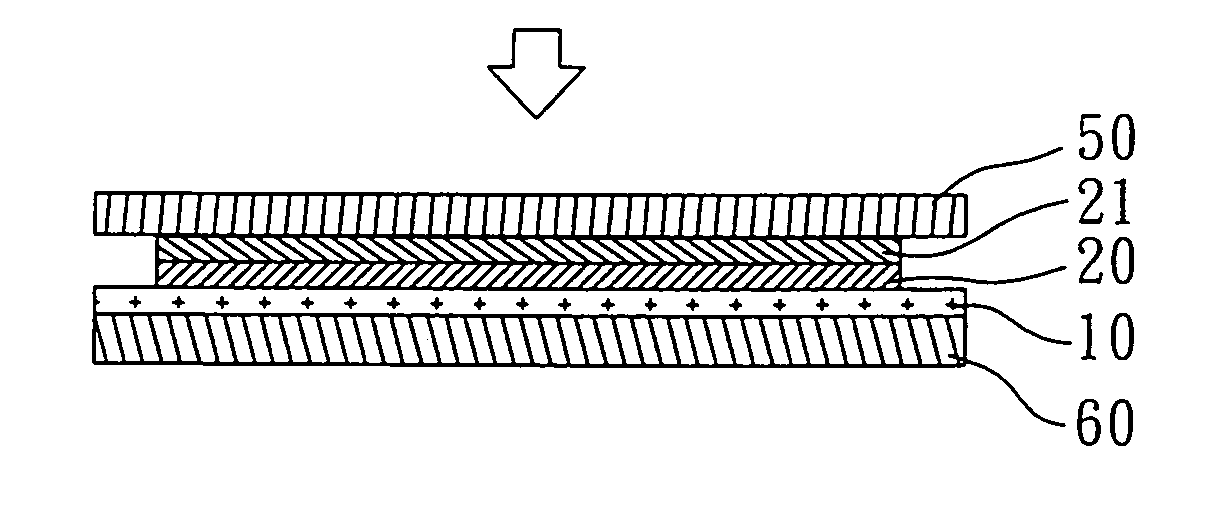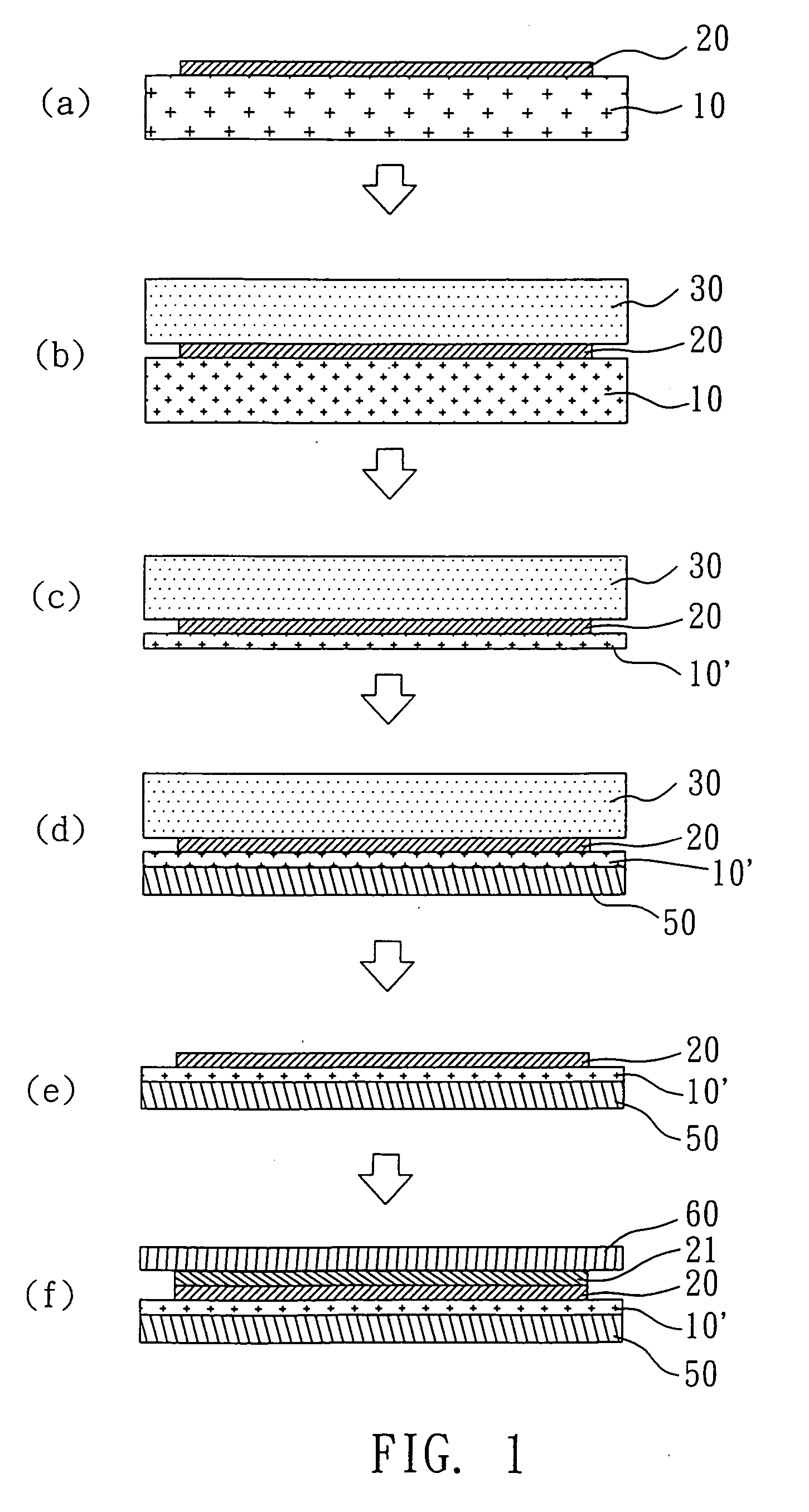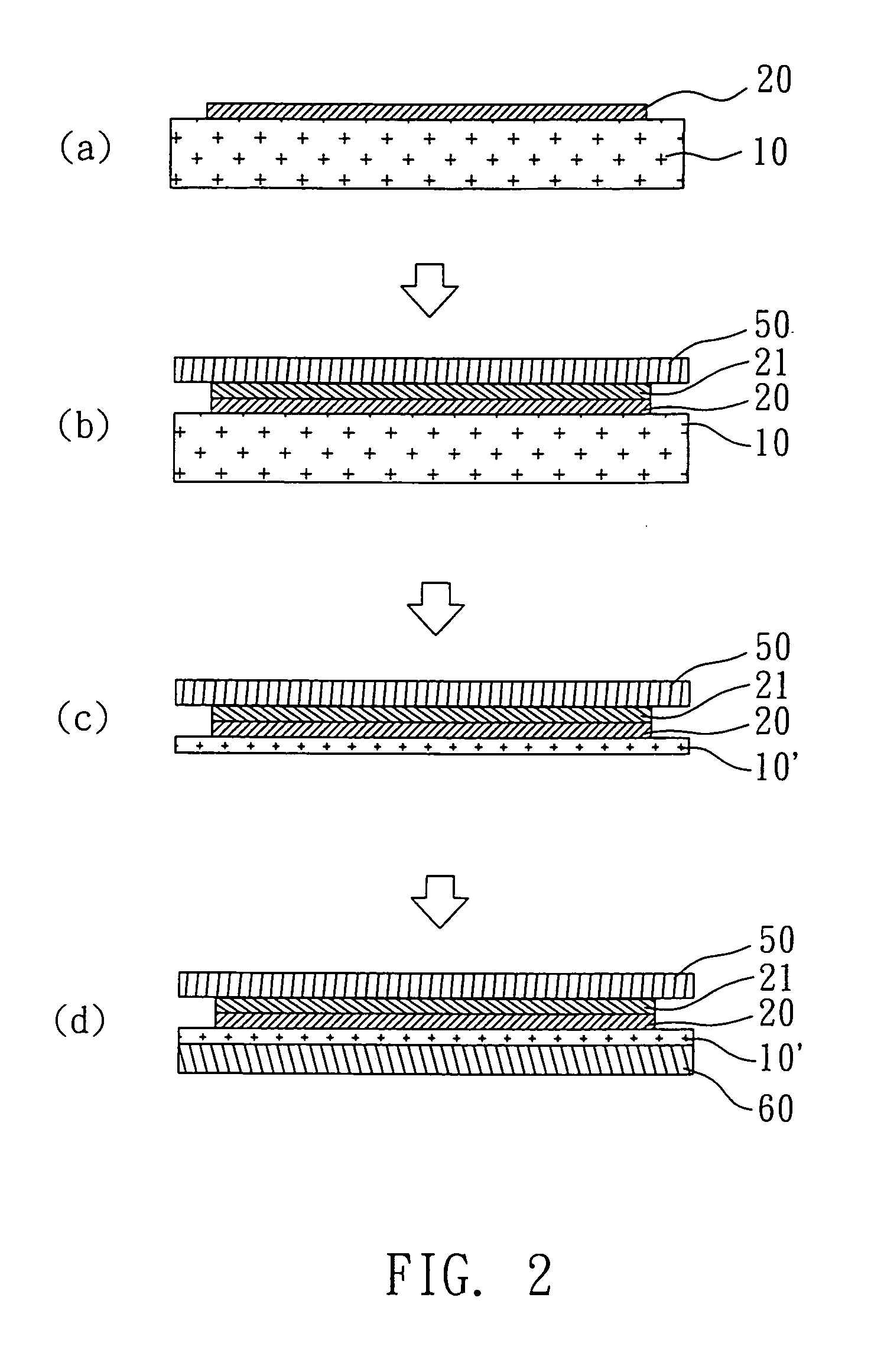Method for manufacturing a flexible panel for a flat panel display
- Summary
- Abstract
- Description
- Claims
- Application Information
AI Technical Summary
Benefits of technology
Problems solved by technology
Method used
Image
Examples
example 1
[0021] With reference to FIG. 1, there is shown the flow diagram of the first example of the present invention. The method for manufacturing a flexible panel of the present invention includes the following steps. First, a first substrate 10 is provided having a plurality of functional switches or conducting lines 20 formed thereon. The functional switches may be thin film transistors. Next, the second substrate 30 is bonded on the functional switches or conducting lines 20. Afterwards, the first substrate 10 is thinned to a predetermined thickness. The flexible third substrate 50 is subsequently adhered on the thinned first substrate 10′ so that the thinned first substrate 10′ is sandwiched between the second substrate 30 and the flexible third substrate 50. Finally, the second substrate 30 is removed.
[0022] It is optional to form a plurality of light valves, light-emitters, or conducting layers 21 on the functional switches or conducting lines 20 and then the flexible fourth subst...
example 2
[0023] With reference to FIG. 2, there is shown the flow diagram of the second example of the present invention. The method for manufacturing a flexible panel of the present example will be illustrated as follows. The first substrate 10 having a plurality of functional switches or conducting lines 20 formed thereon is provided first. Afterwards, a plurality of light valves, light-emitters, or conducting layers 21 is formed on the functional switches or conducting lines 20, and the flexible third substrate 50 is adhered on the light valves, light-emitters, or conducting layers 21. As a result, the functional switches or conducting lines 20 and the light valves, light-emitters, or conducting layers 21 are sandwiched between the first substrate 10 and the third substrate 50. The first substrate 10 is then thinned to a predetermined thickness and forms the thinned first substrate 10′. Finally, the flexible fourth substrate 60 is adhered on the thinned first substrate 10′ so that the fun...
example 3
[0024] With reference to FIG. 3, there is shown the flow diagram of the third example of the present invention. The method for manufacturing a flexible panel of the present example will be illustrated as follows. The first substrate 10 having a plurality of functional switches or conducting lines 20 formed thereon is provided first. The functional switches are thin film transistors in the present example. Next, the second substrate 30 is bonded on the functional switches or conducting lines 20, and then the first substrate 10 is thinned to a predetermined thickness to form the thinned first substrate 10′. Afterwards, the fifth substrate 70 is adhered on the thinned first substrate 10′ and subsequently the second substrate 30 is removed. Next, a plurality of light valves, light-emitters, or conducting layers 21 is formed on the functional switches or conducting lines 20, and then the fifth substrate 70 is removed. Finally, the surface of the whole substrate is coated with a flexible ...
PUM
| Property | Measurement | Unit |
|---|---|---|
| Thickness | aaaaa | aaaaa |
| Flexibility | aaaaa | aaaaa |
Abstract
Description
Claims
Application Information
 Login to View More
Login to View More - R&D
- Intellectual Property
- Life Sciences
- Materials
- Tech Scout
- Unparalleled Data Quality
- Higher Quality Content
- 60% Fewer Hallucinations
Browse by: Latest US Patents, China's latest patents, Technical Efficacy Thesaurus, Application Domain, Technology Topic, Popular Technical Reports.
© 2025 PatSnap. All rights reserved.Legal|Privacy policy|Modern Slavery Act Transparency Statement|Sitemap|About US| Contact US: help@patsnap.com



